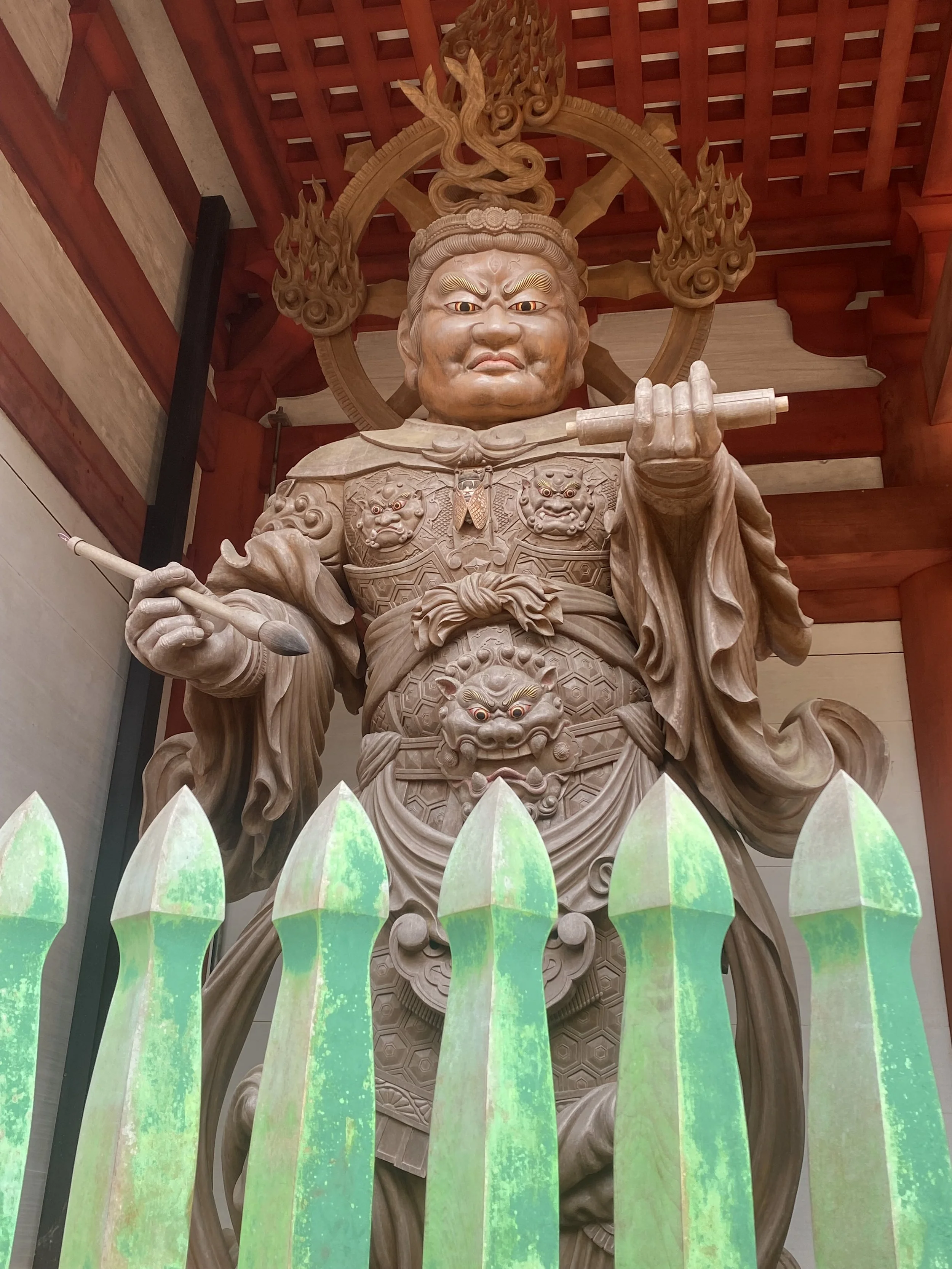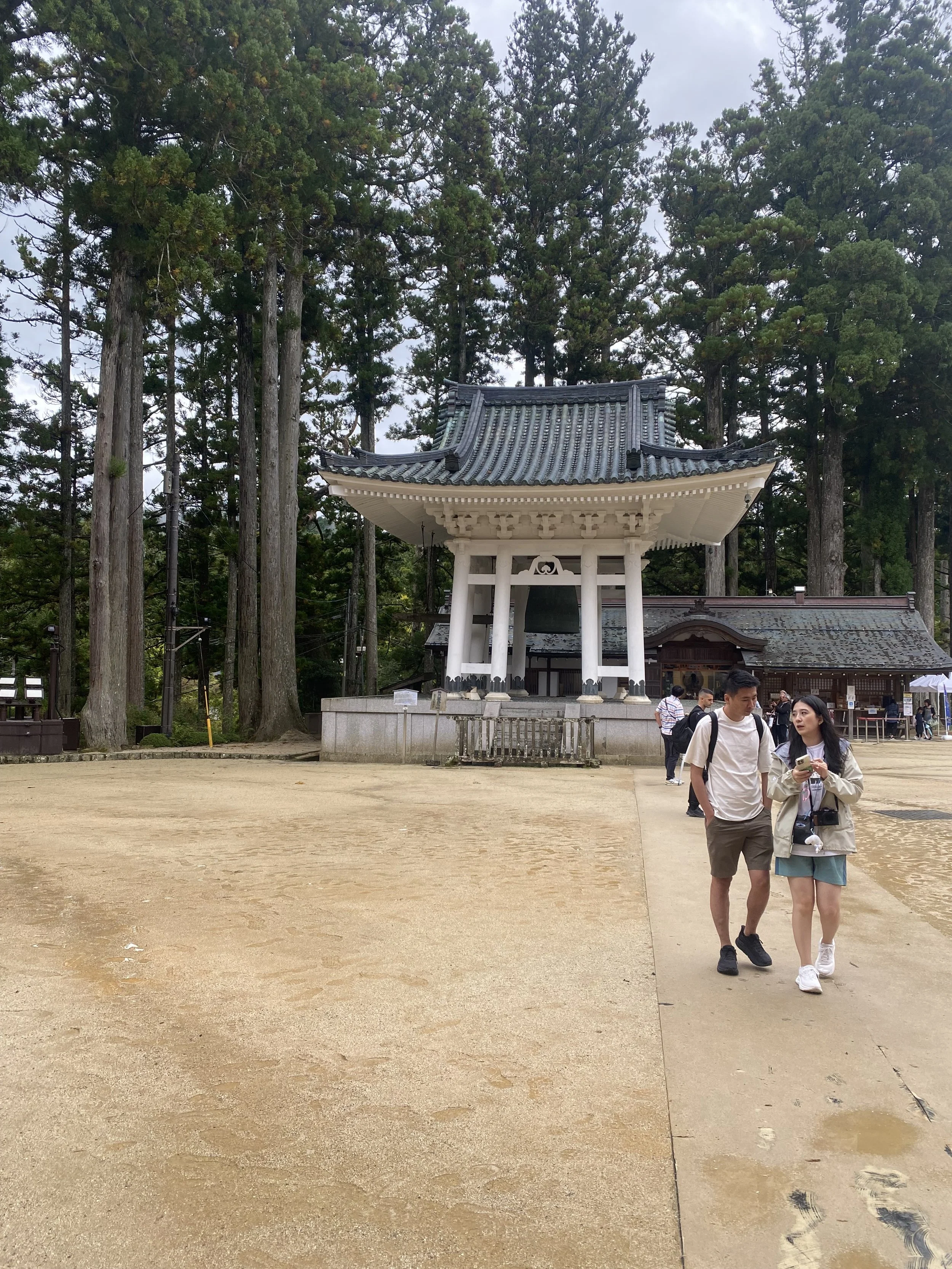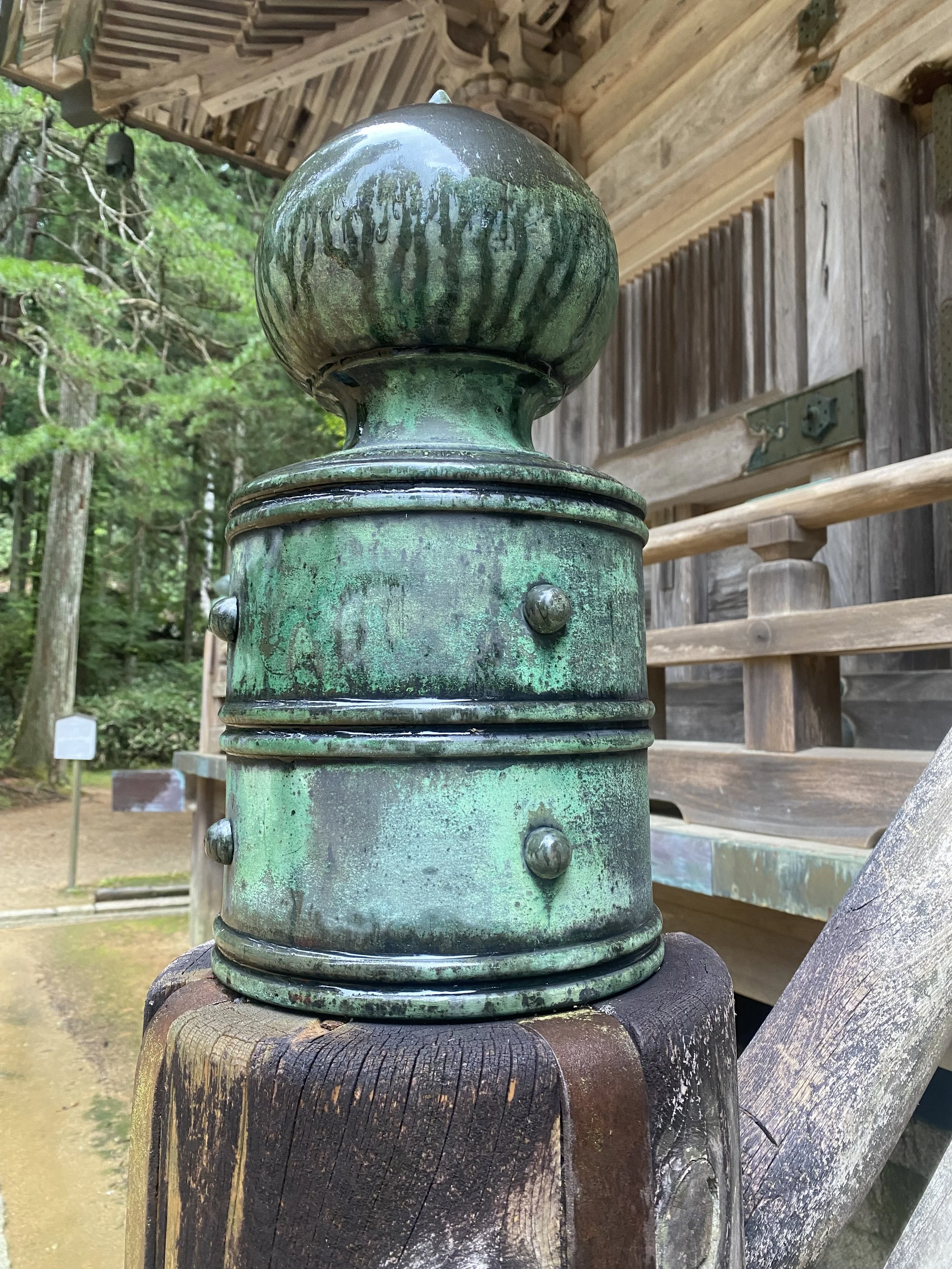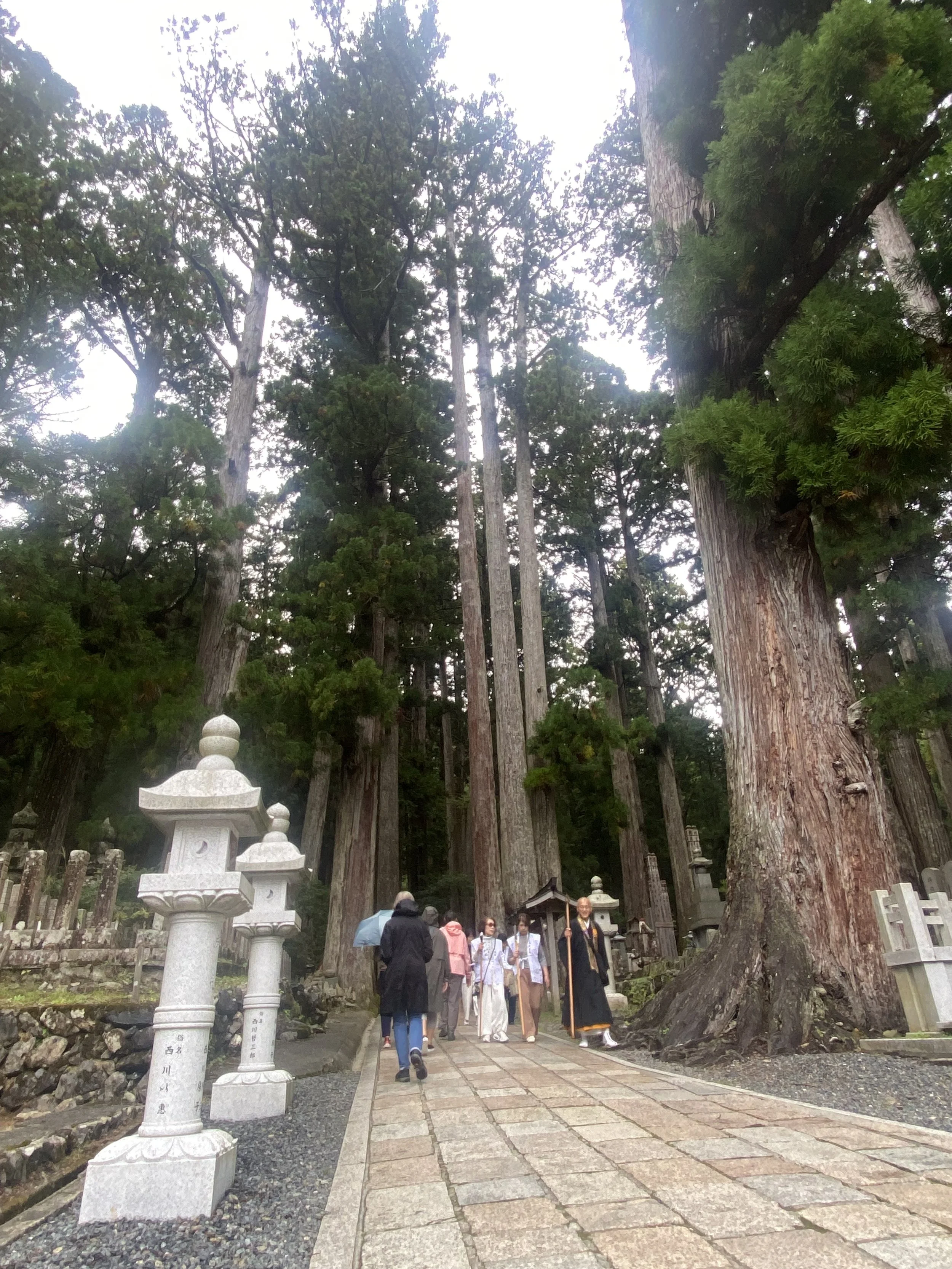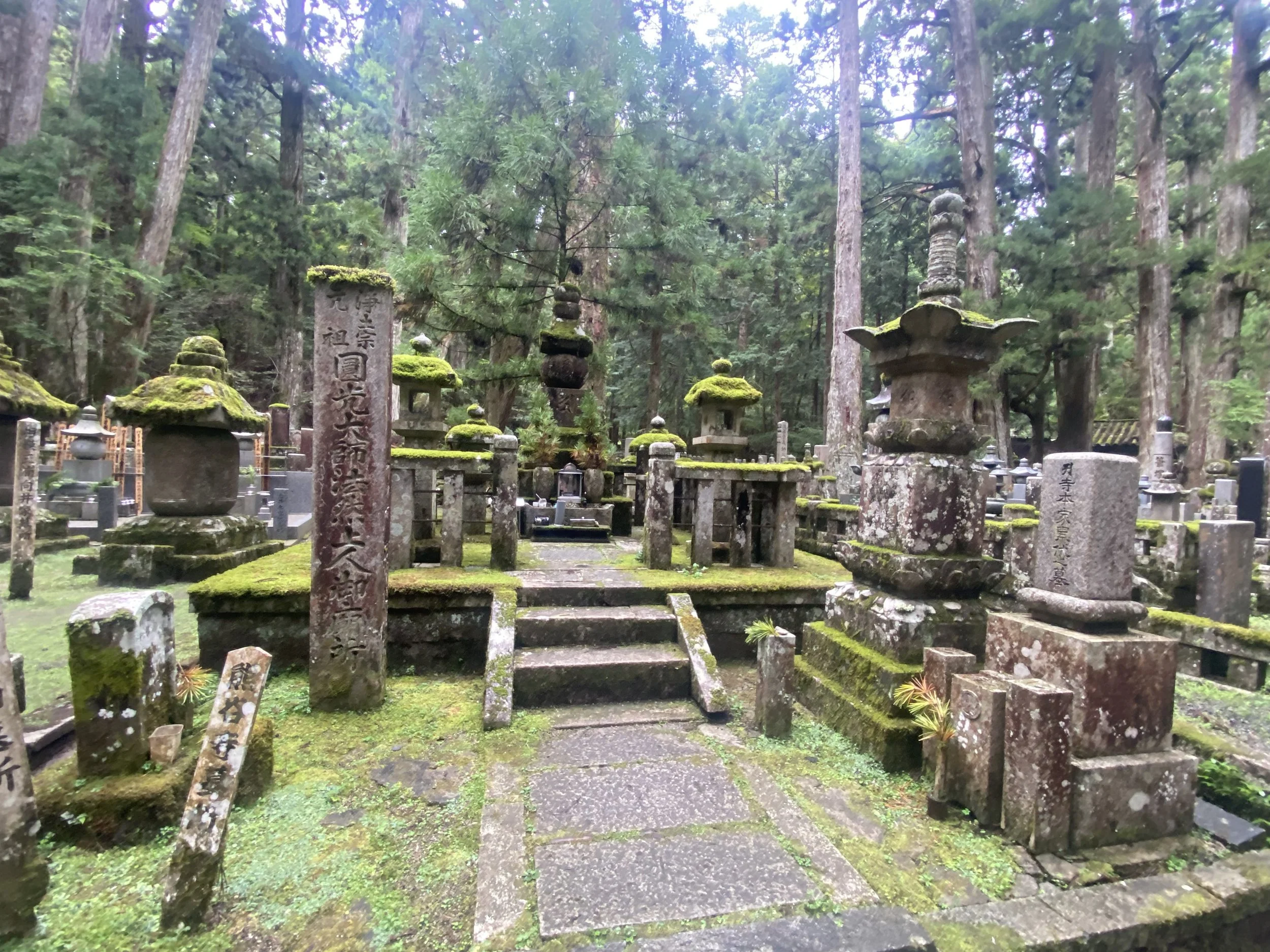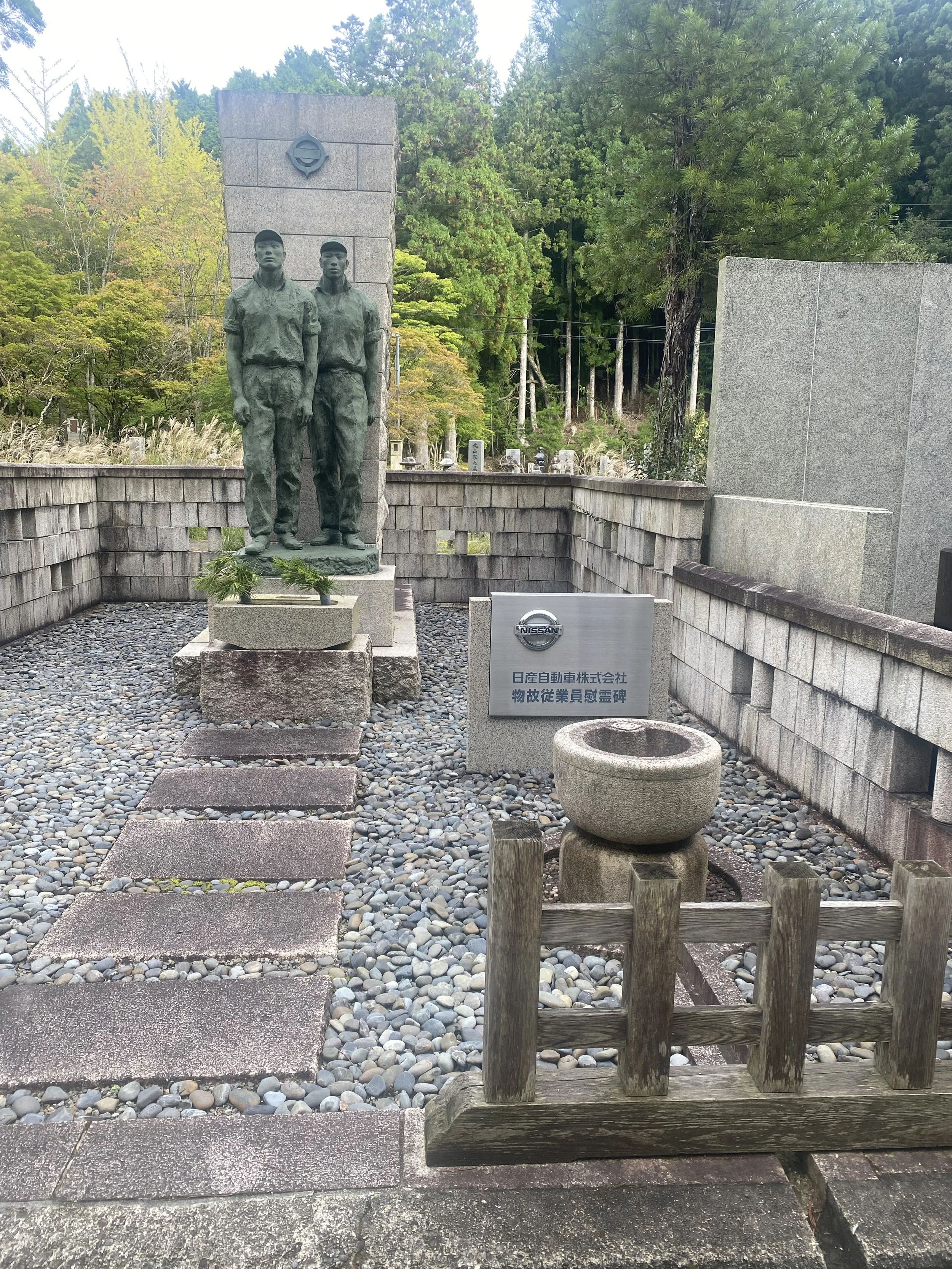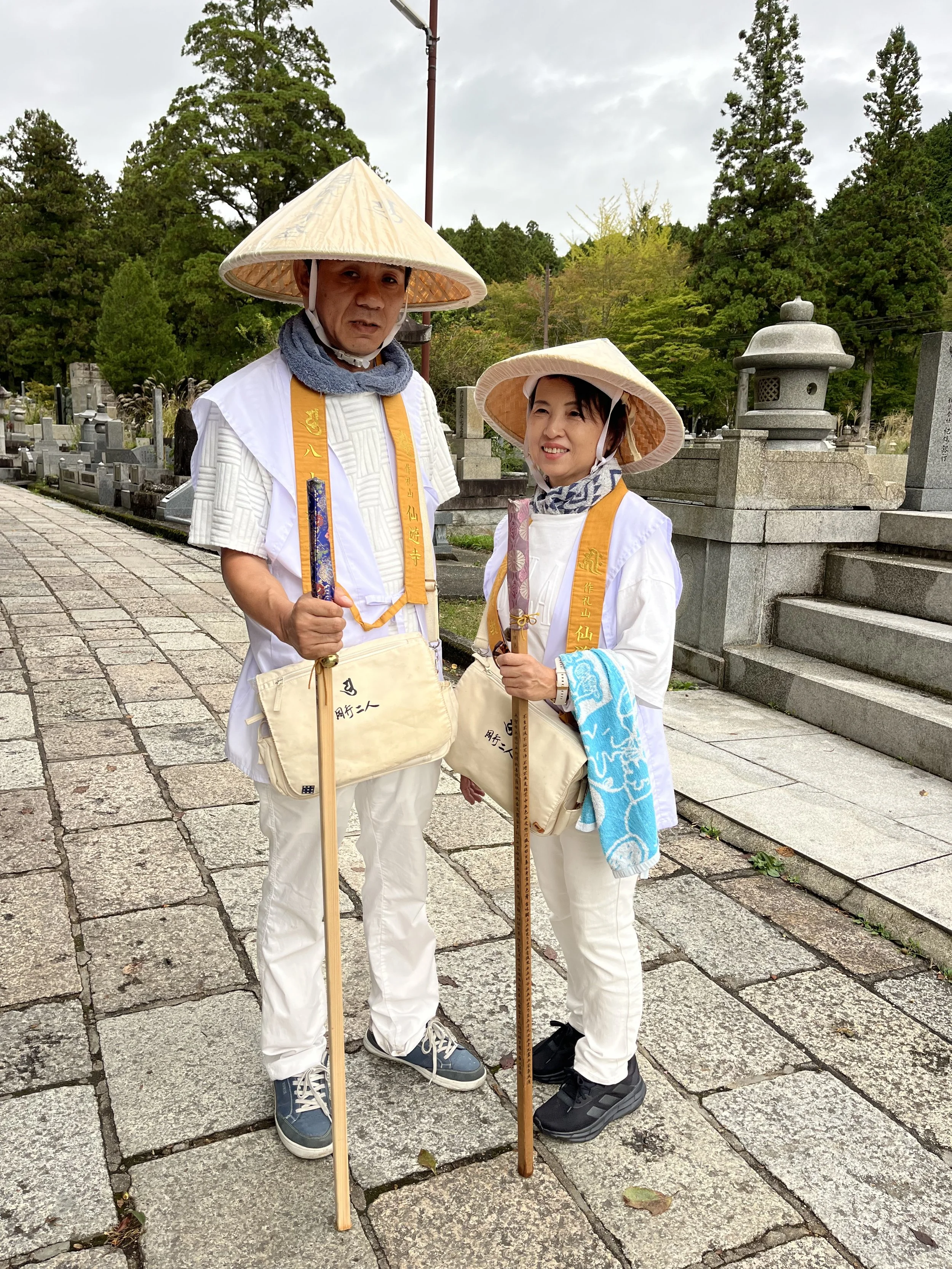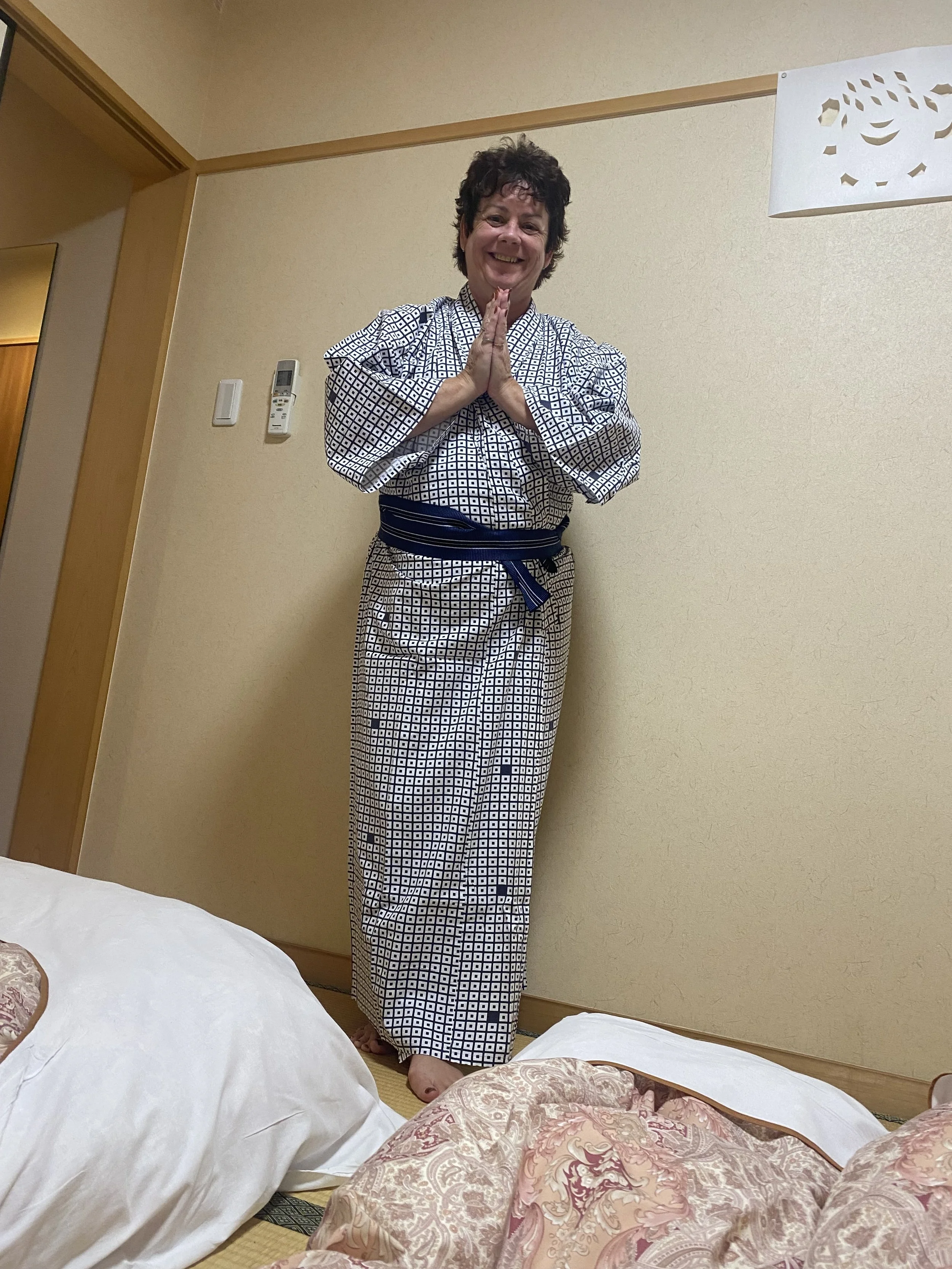Koyasan 高野山
4th October
We headed south out of Kyoto today for one of the most sacred spots in Japan - Mt. Koya. It is the centre of the foundation of Shingon Buddhism set up in 804 AD by the great monk Kobo Daishi Kukai following his gap year in China. In 2004 the site was listed as a UNESCO world Heritage site as a key staging point in the Kii mountain Range pilgrimage.
We were to be treated to watching a morning prayer ceremony after having spent the night in a temple guesthouse (Shukubo) with a vegan dinner. Spartan enlightenment!
Before setting off though we were to dispense of our main bags which were to be sent onto the hotel we would be staying at in two nights time. Like everything else in Japan the process is dealt with in modest efficiency with minimum fuss and you just know that some baggage handles are working like crazy in the background lugging heavy cases around the country to ensure that they are ready and waiting for their owners arrival. You know as well that, like the bowing hotel reception staff, they will be wearing a uniform that will include a cap and probably white gloves.
We have a private minibus for the day and Pauline, as ever, managed to bag the front seats.
The three hour journey through the rain offered little to look at out of the window so I took the opportunity to try to catch up on my sleep quota. Jet lag is a ridiculous condition where you can be deaf on your feet at 6.00pm local time and then feel like you’ve drunk 10 cups of coffee at 1.30 in the morning.
We stopped at a service station on the way. No homogenous fast food outlets here! Instead a vast array of local produce ranging from jarred fruit see here to packets of seaweed.
Buddhism is divided into three distinct methods of worship to reach the common goal of enlightenment. Shingon Esoteric Buddhism is a devotion to spending as much time as possible to reciting the Sutras in Sanskrit in the attempt to reach nirvana in this lifetime. Jam today!
We learn this from our local guide who has met us from the bus. A guide that I am almost certain was the inspiration for the racial stereotyping used by South Park for there Japanese restaurant owner. I found it hard to shake this image through the day and struggled to concentrate on what was being said.
When Kukai first came back to set up the first monastery in this complex the preexisting Shinto beliefs were encompassed with the neat trick of recognising it as just another of the many faces of Buddha to worship. So at the start of the complex there is a Torii gate along with their guarding lion-dogs. The male one on the right of this photo has his mouth open to say ‘a’ the first letter of the alphabet and well and the beginning of all things and the female on the left has her mouth closed to pronounce ‘un’ the last letter. They represent birth / the beginning of everything and death / the end of all things. In between is the span of the life of the people that walk through. There’s nothing quite like it for making you feel insignificant in the overall scheme of things!
There are a total 117 temples in the village and we saw most of the principal ones at the first complex we arrived at. They were really impressive and very reminiscent of our time in Nepal some 35 years ago.
Super bell struck 180 a day. We witnessed the 1 o’clock bonging. The vibration was intense and later when we were in our hotel room we could still hear it at half a mile away.
Exquisite detailing in every corner
Originally all of the buildings would have painted red.
Being predominantly made from timber and filled with candles, the buildings are highly susceptible to fire, especially when you throw in the high chance of lightening strike. In 1925 such a strike occurred and fire quickly spread through the complex in spite of snow and ice covering the ground in between. The 1000 resident monks ran to the nearby freezing cold stream and threw themselves fully robed into it. Not to save themselves but to return to the main and most important building and by lying on the roof spread eagled they managed to protect it from the flames. Nowadays there is a sprinkler system installed!
Lunch consisted of a Bento box which, when the lid was lifted, revealed a rather sad looking collection of cold flaccid vegan food. Particularly tasteless was the square cube of tofu which was only rescued slightly by the green blob of wasabi. I was hungry so managed to force down most of mine but Nick the northerner and his family left pretty much all of theirs. ‘I know what I like and I like what I know. And I know I don’t like that!’
After lunch we returned to the bus and were taken to the graveyard area which seemed to run endlessly away from the centre of the small village. Set in an eerie ancient cedar woodland with alien like structures for tombstones the cemetery felt like the set of a Halloween movie combined with some mysterious alien invasion theme.
In another section there were memorials that weren’t actually memorials but more an offering to Buddha in the hope of bringing fortune and happiness to their workers. Or, if you’re cynical, to buy some advertising space for everyone to see your branding. The Nisan one below was just weird and I have no idea what the two Eastern European dudes are doing in this part of Japan.
Pilgrims take it all very seriously and see this place as a highly significant spiritual centre. Hopefully they haven’t come all of this way just to have the Bento Box lunch at the restaurant we ate at.
Our last stop of the day was another of the 117 temples that the place had to offer and having seen around 17 already today we were rather concerned that we may be required to see all of the of them before the day was out. This one had some really impressive gravel racking work going on though.
Before we arrived to that night’s accommodation we already knew that it was not going to have the mod cons of a luxury boutique hotel but when we arrived and had found our room in was apparent that our low levels of expectation had been set too high. A wafer thin futon on the floor with a thin blanket and enough room to swing a cat but only if it was a very very small one.
There was an Onsen though and Pauline dressed to go to use it making the best of things. (Info on the ritual of using the hot spring bath (onsen) to feature in a later blog)
Dinner looked a little better than lunch and tasted a little too.
But then at breakfast they appeared to have brought out the left overs from the night before. Pauline was not impressed.
A terrible night’s sleep was ended abruptly at 5.30am when we got up and went to the prayer room to watch and hear the resident Buddhist monk chant some sutras and light some incense. The resonance of his voice was powerful and as we sat listening it did become entrancing and we did feel privileged to be taking part albeit remotely from the centre of the action. I think that if we were not so jaded then we would have felt a bit enlightened but the fact that we were so tired, combined with the disconcerting interruptions to the sing song voice from the monk’s tickly cough, meant that we just looking forward to a decent lunch.
No photography is aloud inside the praying areas of temples so unfortunately I cannot share with you the beauty of the space nor the splendour of the gold golden plated Buddhas that sat serenely within it.



